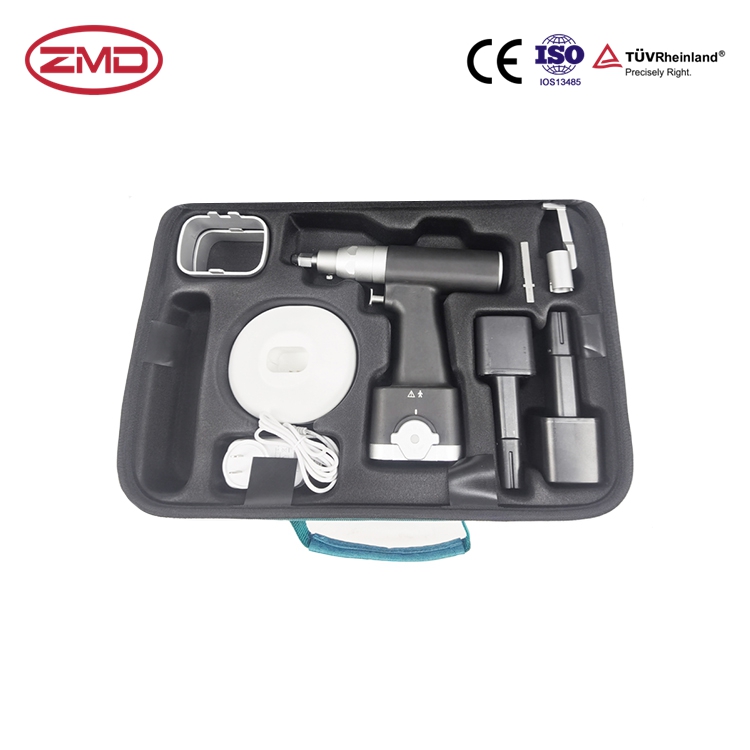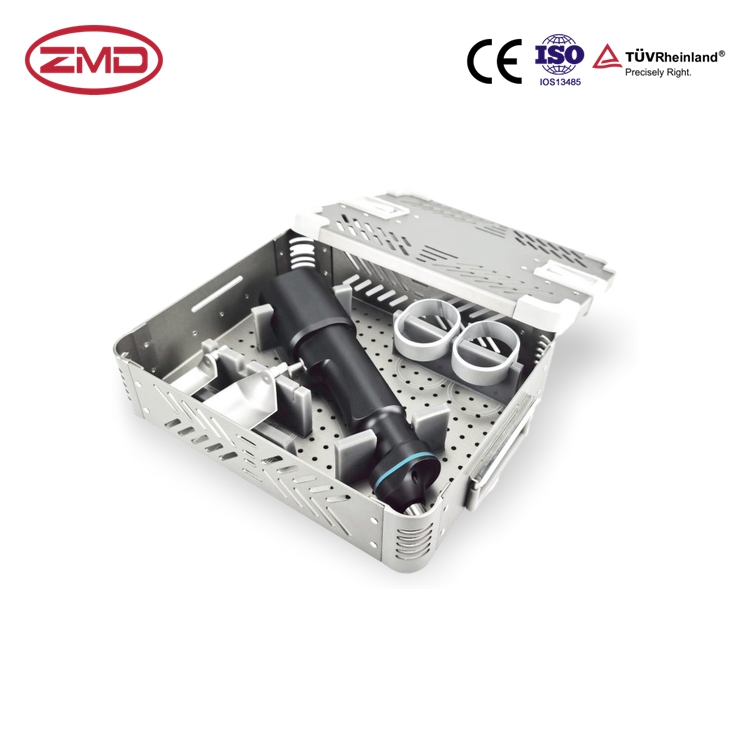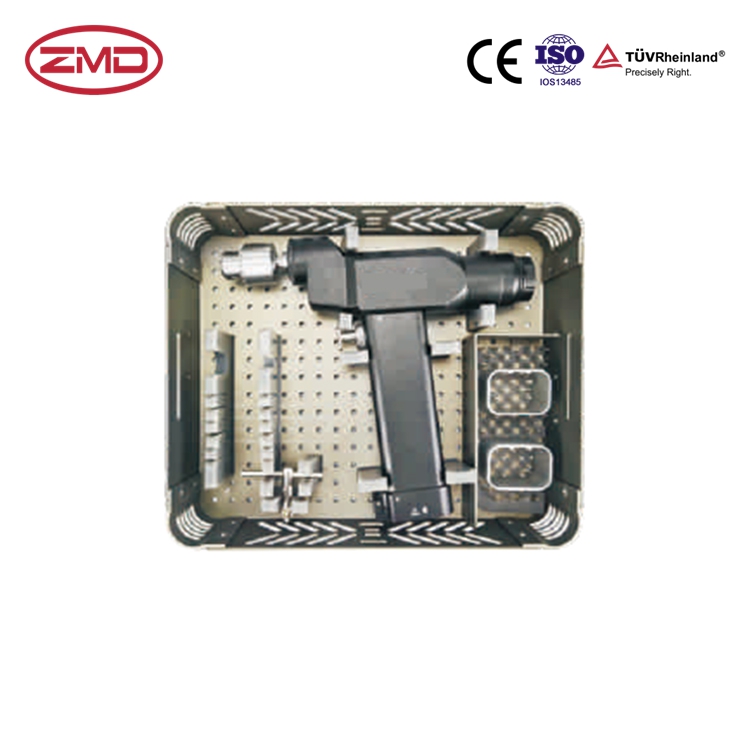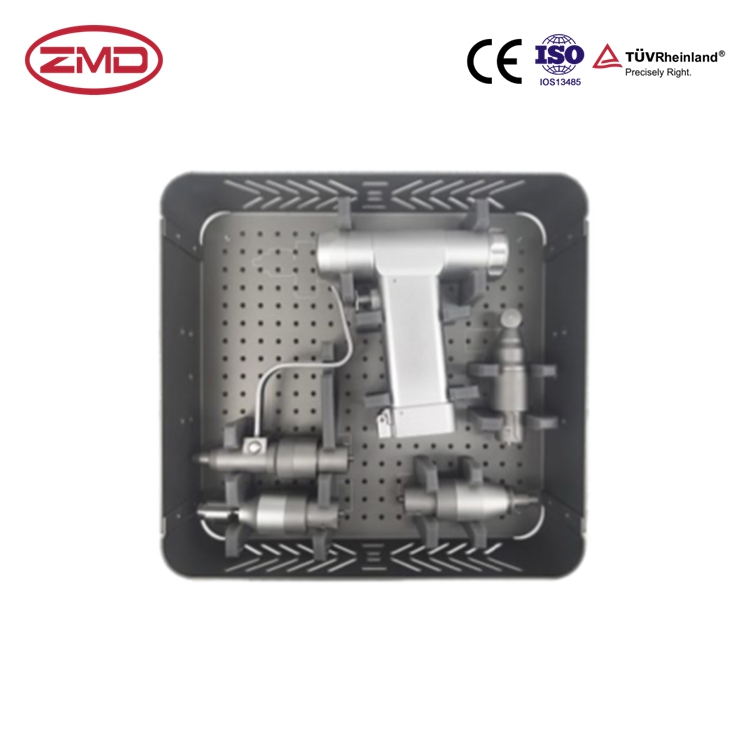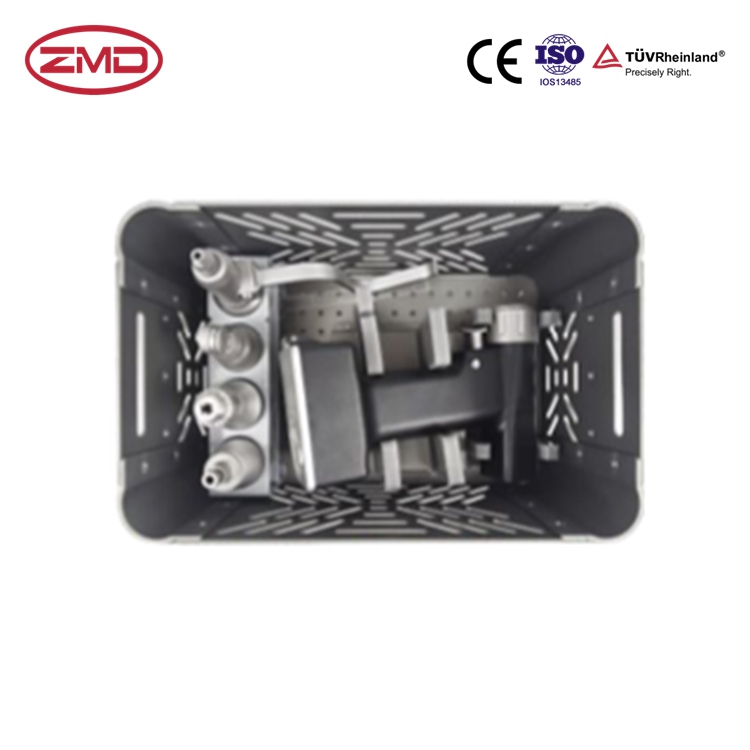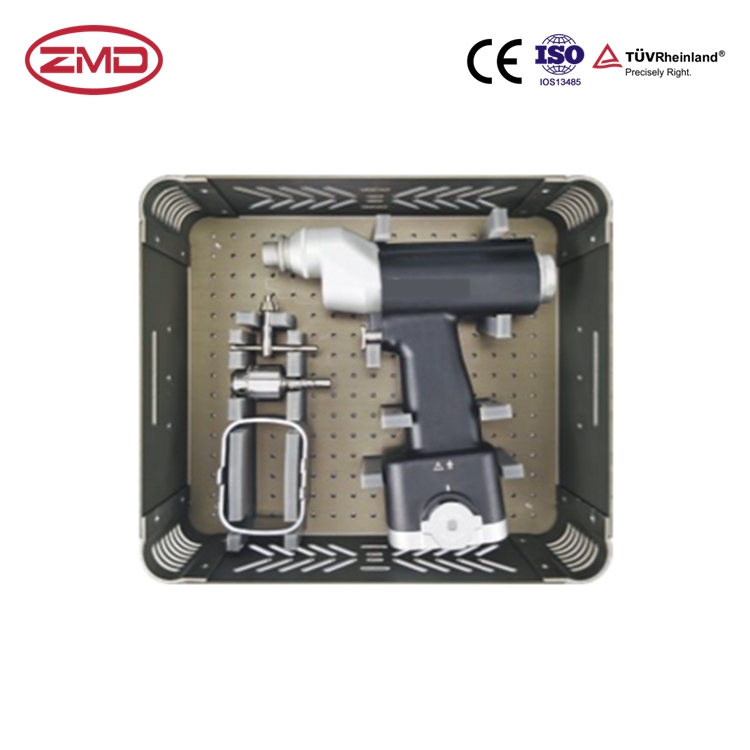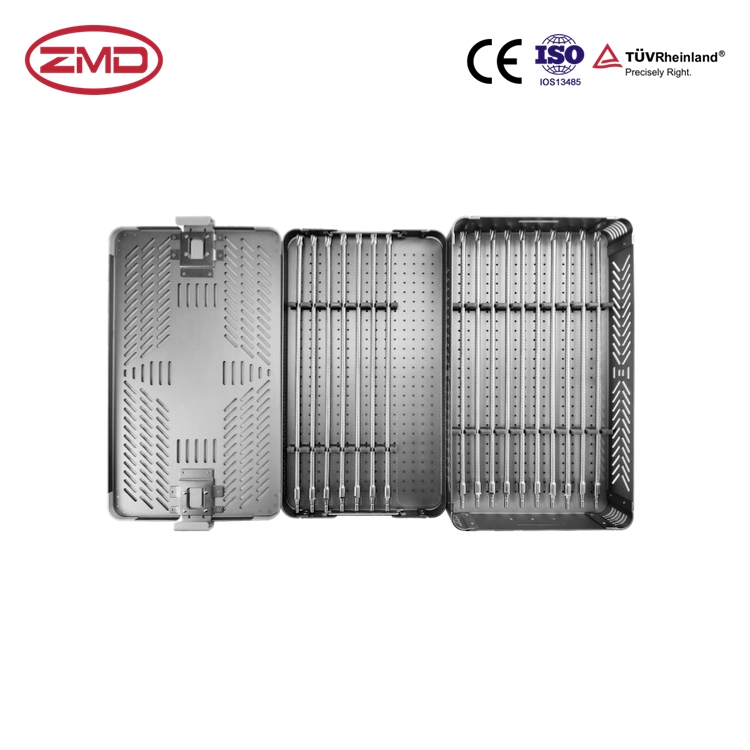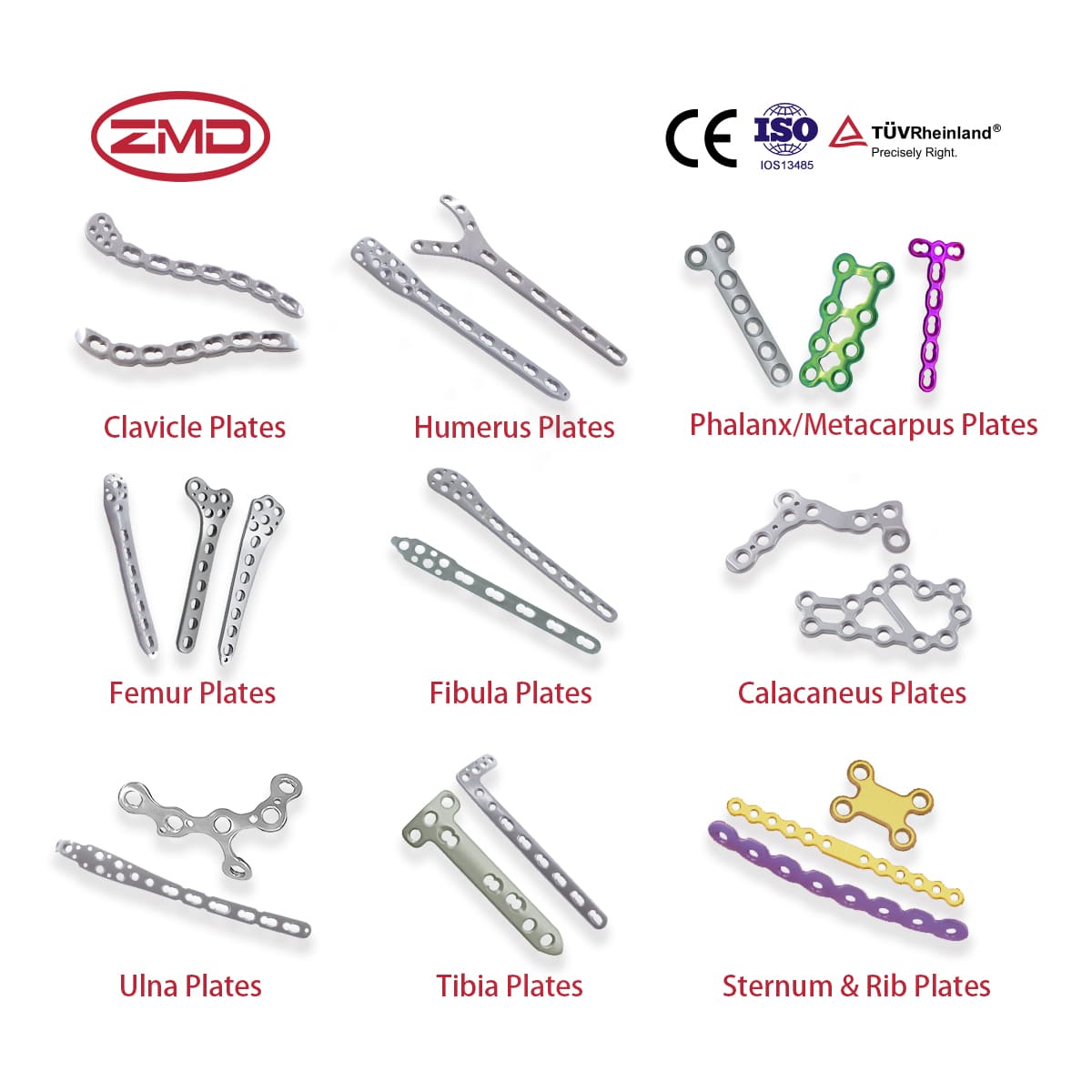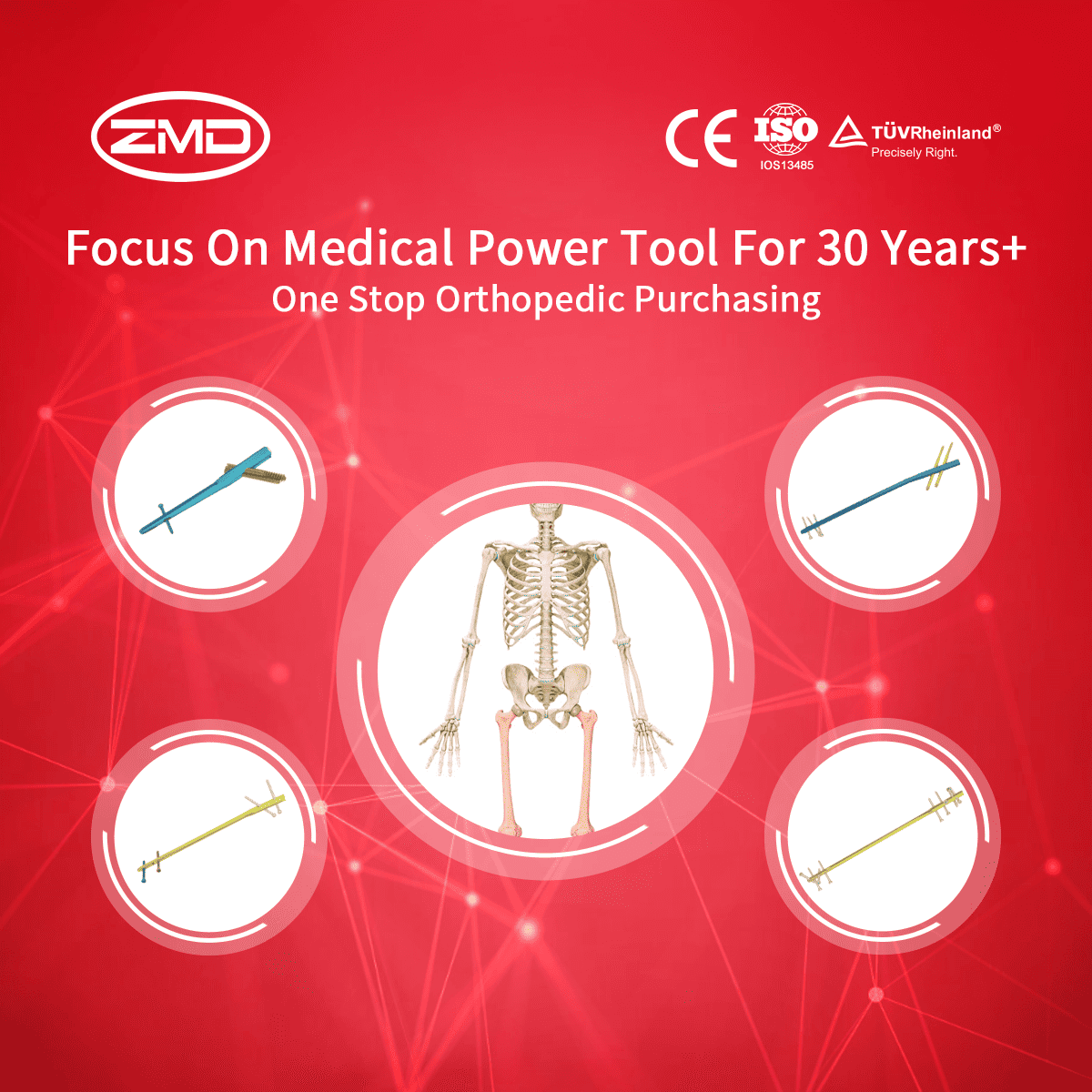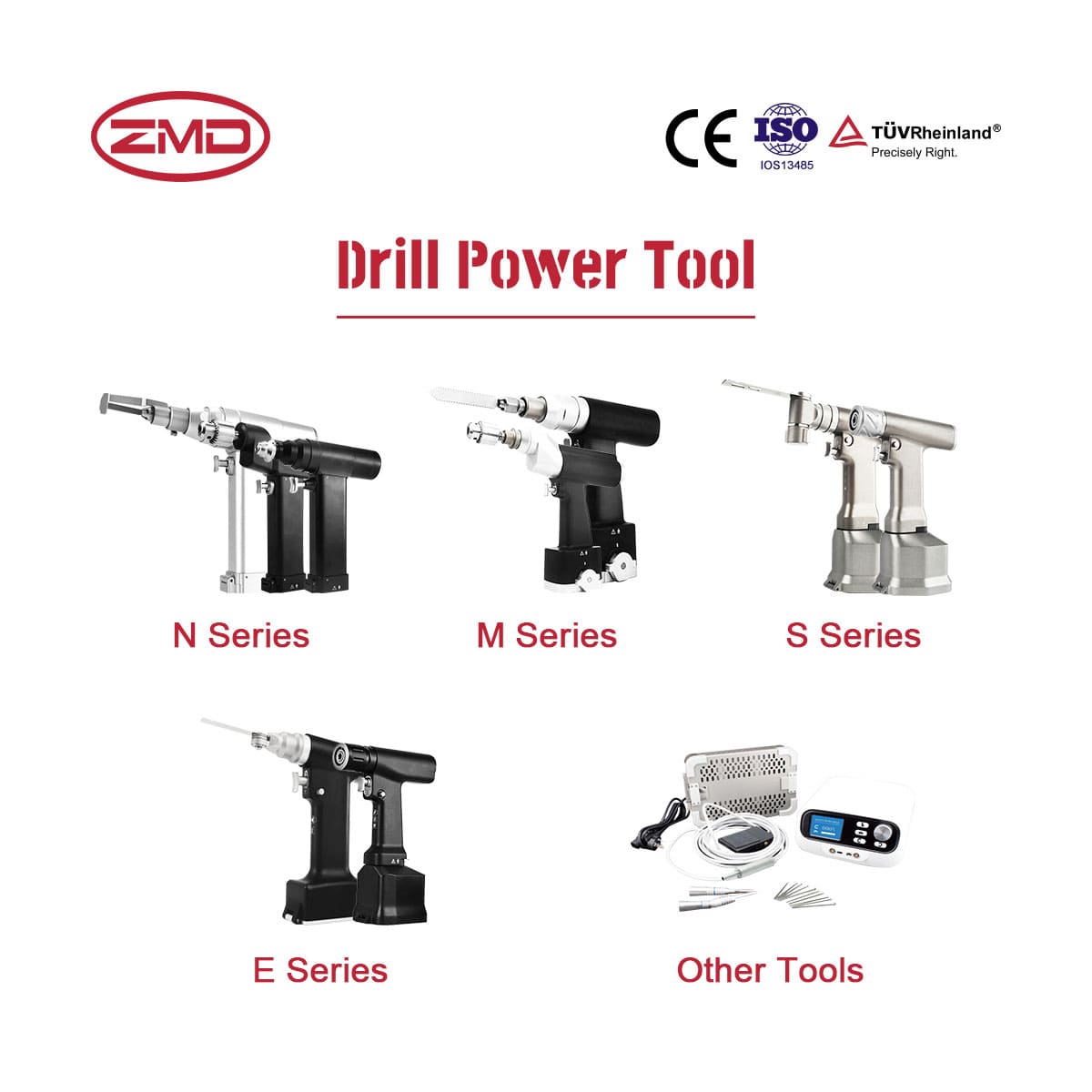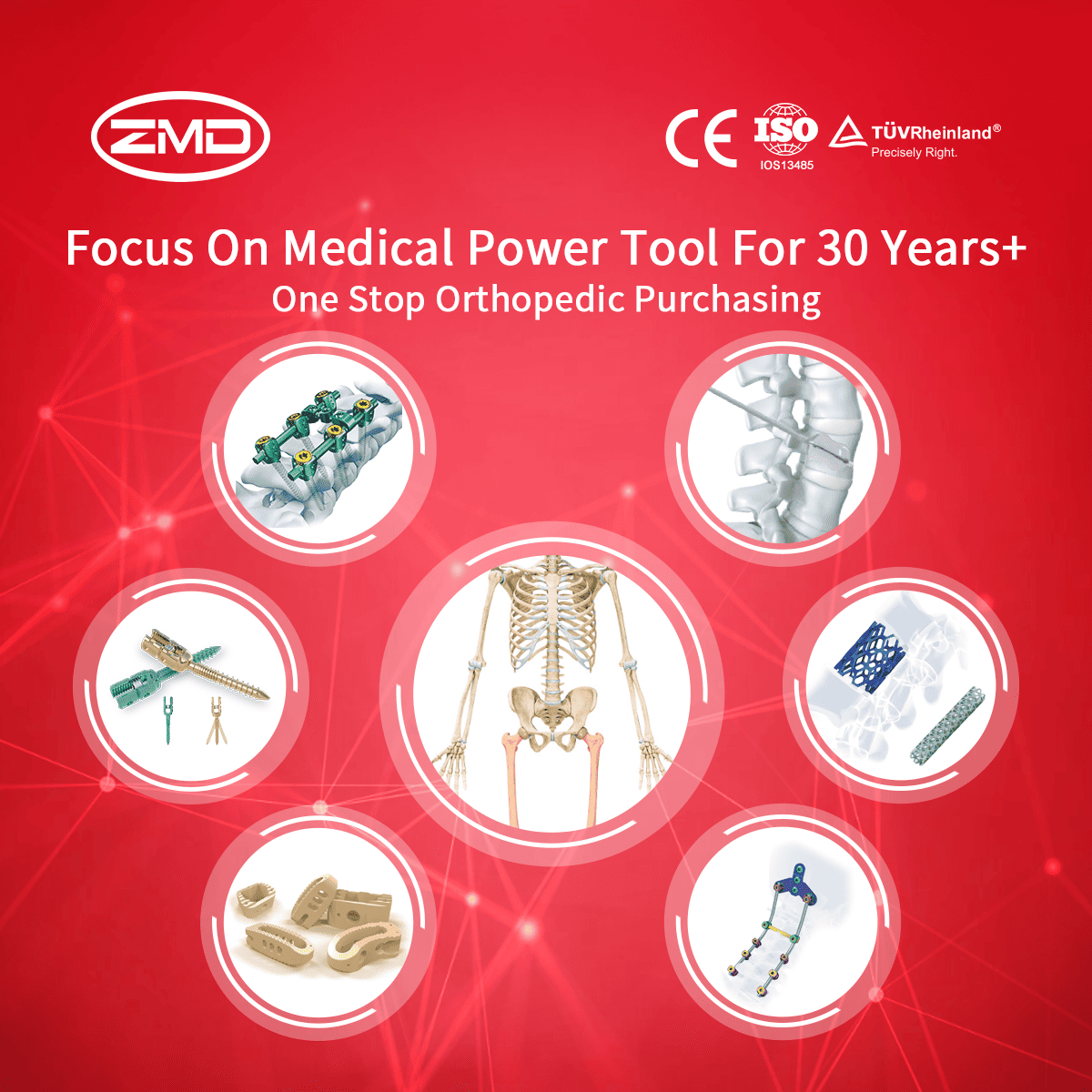Electric Tools
ZMD
Orthopedic Products
Haven't been able to locate the product you're searching for yet?
If you're interested in more orthopaedic implant products, feel free to get in touch with our ZMD consultants.
What are Electric Tools?
One of the most significant aspects of medical electric tools is their ability to offer precise and accurate performance. In minimally invasive surgeries, for instance, where access to the surgical site is limited and the margin of error is extremely small, these tools shine. Take laparoscopic surgeries as an example. Electric surgical scissors or graspers can be controlled with utmost precision to cut or manipulate tissues within the abdominal cavity. The fine-tuned motors in these tools allow for delicate movements, enabling surgeons to make incisions or dissections exactly where needed, minimizing damage to surrounding healthy tissues. This precision is crucial not only for achieving the desired surgical outcomes but also for reducing post-operative complications and promoting faster recovery for patients.

Multifunctional Medical Drill Saw System
- Bone Drilling Precision: In orthopedic surgeries, when it comes to preparing bones for implant insertion, such as in joint replacements or fracture fixations, the drill function of this system allows for highly accurate hole creation. The system can be adjusted to control the drilling speed and torque based on the specific bone density, ensuring that the holes are drilled precisely to the required depth and diameter. For example, in a hip replacement, the drill can create the perfect holes in the femur for the femoral stem of the implant to fit snugly, which is crucial for the long-term stability of the prosthesis.
- Soft Tissue Cutting: When dealing with soft tissues, the saw function comes into play. It enables surgeons to make intricate cuts with remarkable precision. In surgeries involving the removal of tumors that are adjacent to delicate soft tissues or during reconstructive procedures where precise shaping of soft tissue flaps is necessary, this saw can delicately slice through the tissues without causing excessive damage. The blades are designed to be sharp yet gentle enough to minimize trauma and bleeding, allowing for better post-operative healing and recovery.
- Implant Manipulation: Moreover, the system’s ability to delicately manipulate medical implants is invaluable. Surgeons can use it to position and adjust implants accurately within the body. For instance, in spinal surgeries where rods or plates need to be placed precisely along the vertebrae, the drill saw system can assist in creating the necessary anchor points and making any fine adjustments to ensure the implants are in the optimal position for spinal stability and support.
Medical Electric Drill
- Implant Placement: When it comes to placing implants, whether they are screws for fracture fixation in orthopedics or dental implants, these drills offer unparalleled accuracy. The small size and ergonomic design of medical electric drills allow surgeons to access tight spaces within the body. For example, in hand surgeries where the bones are relatively small and delicate, the drill can create holes for tiny screws to hold fractured bone fragments together. The ability to control the drill’s speed and power ensures that the holes are drilled precisely, preventing any damage to the surrounding bone tissue that could affect the implant’s stability or the overall healing process.
- Accessing Confined Spaces: In minimally invasive surgeries, accessing and working within confined spaces is a common challenge. Medical electric drills are designed to meet this challenge head-on. In laparoscopic surgeries, for instance, if there is a need to create small holes in the abdominal wall for the insertion of trocars or to drill through a small bone fragment during a minimally invasive orthopedic procedure, these drills can be maneuvered with great dexterity. Their compact nature and precise operation make it possible to perform such tasks without causing unnecessary disruption to the surrounding tissues or structures.
Medical Electric Saw
- Nerve and Vessel Surgery: When operating around delicate nerves, intricate blood vessels, or fine tissue membranes, the precision of these saws is vital. In neurosurgery, for example, when removing a brain tumor that is close to important nerve pathways, the electric saw can be used to carefully cut through the surrounding tissues without severing or damaging the nerves. The saw’s design allows for a controlled cutting motion, minimizing the risk of accidental injury. Similarly, in vascular surgeries where access to blood vessels needs to be carefully managed, the electric saw can delicately cut through any overlying tissues to expose the vessels for repair or bypass procedures, all while ensuring the integrity of the vessels is maintained.
- Tissue Dissection: In procedures involving the dissection of fine tissues, such as in plastic surgery for reconstructive or cosmetic purposes, medical electric saws offer a level of control that is essential. They can be used to make precise incisions through layers of skin, fat, and fascia, allowing surgeons to create the desired tissue flaps or contours with minimal trauma. This precision not only results in better aesthetic outcomes but also reduces the risk of post-operative complications like excessive bleeding or poor wound healing due to tissue damage.
Medical Electric Cannulated Drill
- Minimal Tissue Disruption: The hollow shafts of these drills are a key feature that enables the passage of wires, cables, or other instruments. In spinal surgeries, for example, when inserting screws for spinal fixation, the cannulated drill can first create a hole while allowing a guidewire to be inserted through its hollow center. This guidewire then serves as a reference for subsequent steps, ensuring that the screw is placed accurately along the intended path. The ability to perform these maneuvers with minimal disruption to the surrounding tissues is crucial in reducing post-operative pain, swelling, and the risk of nerve or spinal cord damage.
- Complex Surgical Maneuvers: In neuro- and orthopedic surgeries, these drills facilitate complex maneuvers that would be challenging with traditional tools. For instance, in certain orthopedic procedures where internal fixation is required in a minimally invasive manner, the cannulated drill can be used to create a tunnel through which fixation devices can be inserted precisely. In neurosurgery, when accessing deep-seated brain structures or when performing procedures on the spinal cord, the ability to pass instruments through the drill’s hollow shaft allows for more controlled and less invasive approaches, safeguarding the delicate neural tissues and improving the overall surgical outcomes

When Are Electric Tools Needed?
In the highly complex world of medicine, precision is not just a desirable trait but an absolute necessity. Medical electric tools are engineered to meet this requirement with remarkable precision. For example, in minimally invasive cardiac surgeries, electric catheters equipped with tiny electrodes can precisely map the electrical pathways of the heart. This allows surgeons to identify abnormal rhythms and precisely target areas for ablation, all while minimizing damage to the surrounding healthy heart tissue. Similarly, in ophthalmic surgeries, electric micro-tools can delicately manipulate the delicate structures of the eye, such as the retina and lens, with micron-level accuracy. This precision ensures that procedures like cataract removal or retinal repair are carried out with the utmost care, maximizing the chances of a successful outcome and preserving the patient’s vision.
Multifunctional Medical Drill Saw System
- Precision in Bone Drilling: In orthopedic surgeries, accurate bone drilling is crucial for many procedures. For instance, in a knee replacement operation, the drill component of this system can precisely create holes in the femur and tibia bones for the insertion of screws that will hold the artificial joint components in place. Surgeons can adjust the speed and torque of the drill according to the specific bone density, ensuring that the holes are drilled to the exact required depth and diameter. This level of precision is vital for the long-term stability and proper functioning of the implant, reducing the risk of loosening or misalignment over time.
- Intricate Soft Tissue Cuts: When it comes to dealing with soft tissues, the saw function of the system shines. In complex reconstructive surgeries, like those involving the repair of soft tissue defects after trauma or tumor removal, the saw can make delicate cuts through muscles, fascia, and other soft tissues. For example, in a breast reconstruction surgery following a mastectomy, the surgeon might use the saw to carefully shape the flaps of tissue for a more natural appearance. The ability to execute such intricate cuts minimizes damage to the blood supply and nerve endings within the soft tissues, promoting better healing and aesthetic outcomes.
- Implant Manipulation: Moreover, the system’s capacity to delicately manipulate medical implants is of great significance. In spinal surgeries where rods and screws are used to correct deformities or stabilize the spine, the drill saw system allows surgeons to position the implants accurately. They can use the drill to create the necessary anchor points in the vertebrae and then use the saw, if needed, to make any fine adjustments to the bone surfaces for optimal implant placement. This ensures that the implants interact properly with the surrounding bone and soft tissues, enhancing the overall success of the surgical intervention.
Medical Electric Drill
- Implant Placement: In dental implant surgeries, for example, these drills are essential for creating precise holes in the jawbone. The small size and precise control of the drill allow dentists or oral surgeons to place the implants in the optimal position, considering factors such as bone density and the anatomy of the surrounding teeth. This is crucial for the long-term success of the implant, as proper positioning ensures good osseointegration (the integration of the implant with the bone) and stability for chewing and speaking functions.
- Accessing Confined Spaces: In minimally invasive surgeries within the body, such as laparoscopic or arthroscopic procedures, accessing and working in tight spaces can be challenging. Medical electric drills are designed to overcome these challenges. For instance, in arthroscopic knee surgery, if there’s a need to drill a small hole for the insertion of a fixation device for a torn ligament repair, the drill can be maneuvered through the small incisions and within the joint space with great dexterity. Its ability to deliver precise and controlled drilling in such confined areas helps to minimize damage to the surrounding cartilage and other joint tissues.
Medical Electric Saw
- Nerve and Vessel Surgery: In neurosurgery, when operating around the brain or spinal cord, the utmost precision is necessary to avoid damaging the delicate nerve structures. For example, in a procedure to remove a spinal tumor that is adjacent to the spinal cord and nerve roots, the medical electric saw can be used to carefully cut through the bone and any overlying soft tissues. The controlled cutting motion of the saw allows surgeons to separate the tumor from the vital nerve tissues without causing any harm, ensuring that the patient’s neurological function is preserved. Similarly, in vascular surgeries where blood vessels need to be accessed or repaired, the saw can delicately cut through the surrounding tissues to expose the vessels while minimizing trauma to them, which is crucial for maintaining proper blood flow.
- Tissue Dissection: In plastic and reconstructive surgeries, precise tissue dissection is key to achieving good aesthetic and functional outcomes. When performing a facelift or a rhinoplasty, for example, the medical electric saw can be used to make fine incisions and cuts through the skin, subcutaneous tissues, and cartilage. This enables surgeons to reshape the facial structures precisely as desired, while reducing the risk of excessive bleeding, bruising, and damage to the underlying tissues that could lead to poor healing or an unnatural appearance.
Medical Electric Cannulated Drill
- Minimal Tissue Disruption: In spinal fusion surgeries, the hollow shaft of the cannulated drill is a crucial feature. Surgeons can insert a guidewire through the shaft first and then use the drill to create a hole along the path of the guidewire in the vertebrae. This technique allows for precise placement of screws for spinal fixation while minimizing disruption to the surrounding muscles, ligaments, and nerve tissues. The ability to pass other instruments through the hollow shaft also simplifies the surgical process and reduces the number of additional incisions or manipulations that could cause trauma to the patient’s body.
- Complex Surgical Maneuvers: In orthopedic trauma surgeries, especially those involving fractures in areas with limited access, like the femoral neck or the spine, the cannulated drill enables surgeons to perform complex maneuvers. For example, in a minimally invasive fixation of a femoral neck fracture, the drill can be used to create a tunnel through which fixation pins or screws can be inserted precisely. This approach reduces the need for large open incisions, decreases blood loss, and promotes faster recovery by minimizing damage to the soft tissues around the fracture site. In neurosurgery, when dealing with deep-seated brain lesions or when performing procedures on the spinal cord, the cannulated drill facilitates the insertion of catheters or electrodes through its hollow shaft, allowing for more targeted and less invasive interventions while safeguarding the delicate neural tissues
Blog
International Women’s Day: Salute to the “She – Power” at ZMD
International Women’s Day: Salute to the “She – Power” at ZMD Amid the trends of “Intelligent Medical Devices” and “Minimally Invasive Medical Technologies”, ZMD thrives
Discover Innovation with Sunan Medical at AAOS
Discover Innovation with Sunan Medical at AAOS The American Academy of Orthopaedic Surgeons (AAOS) Annual Meeting is the premier event for orthopedic professionals worldwide, offering
Visit Us at Expomed Eurasia 2025: Discover Sunan Medical’s Innovations
Visit Us at Expomed Eurasia 2025: Discover Sunan Medical’s Innovations The 32nd Expomed Eurasia, taking place from April 24-26, 2025, at the Tüyap Exhibition and


